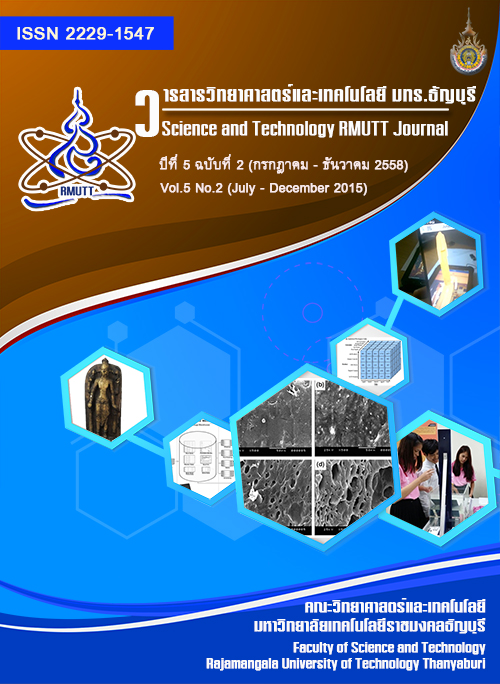Investigation and Improvement of Film Radiography Speed for Non-Destructive Inspection of Industrial Specimens
Main Article Content
Abstract
Film radiography is still used extensively in industry even the image recording efficiency of film is as low as <1% and is much lower at high energy range. The imaging plate (IP) is >10 times more sensitive than the conventional screen-film technique but its image reader and the imaging plate are relatively high costly. Fading of the image data on the IP is also a problem. This research emphasizes on improvement of the screen-film speed to reduce the exposure time by using the new PI-200 gadolinium oxysulfide (GOS) fluorescent screen. By using the PI-200 screens, the intensifying factors (IF) were found to be approximately 33.6, 39.0 and 61.3 for 100, 130 and 160 kVp x-rays while the IF’s of the conventional lead screens were approximately 2.8, 3.4 and 4.0, respectively. The IF’s for 192Ir and 60Co gamma rays were found to be approximately 13.7 and 7.3 while the IF’s of the conventional lead screens were approximately 5.8 and 1.4, respectively. The PI-200 screen thus could increase the speed of the conventional lead screen-film by at least 2 times depending on photon energy. Moreover, the sensitivity of the radiograph obtained from the PI-200 was comparable to those obtained from the conventional lead screen film technique. It was also found that the image quality could significantly improve by using lead filter to absorb the scattered gamma rays at low energy range particularly when the specimens contained light elements such as concrete.
Article Details
References
2. U. Bulubay and. A. Beril Tugrul, Quantitative Evaluation of Intensifying Screen Materials in Co-60 Radiography for Steel Parts, NDT&E International, 1998, 31, 193-199.
3. R.C. Barrosoa, O.D. Gongalvesb; J. Eichler; R.T. Lopesds; S.C. Cardosoe, Study of Secondary X-rays from Radiographic Intensifying Screens, Nuclear Instruments and Methods in Physics Research A, 1998, 404, 407-412.
4. I. Kandarakis, D. Cavourasa; G.S. Panayiotakisb; D. Triantisc; C.D. Nomicos, An Experimental Method for The Determination of Spatial-Frequency-Dependent Detective Quantum Efficiency (DQE) of Scintillators Used in X-Ray Imaging Detectors, Nuclear Instruments and Methods in Physics Research A, 1997, 399, 335-342,
5. Mitsubishi Chemical Coporation, 2009. http://www.mcc-phosphor.com/english/products/x-ray/fluorescent/drz_pi.html. Jan 2013.
6. MCI Optonix, LLC, AZ, USA 2015 http://www.mcio.com/Products/intensifying-screen-rare-earth-blue.aspx. Jan 2015.
7. Staff of IAEA. Industrial radiography: Training Course Series No.3, Manual of The Syllabi Contained in IAEA-TECDOC-628. Austria: National Atomic Energy Agency, Vienna, 1992.


